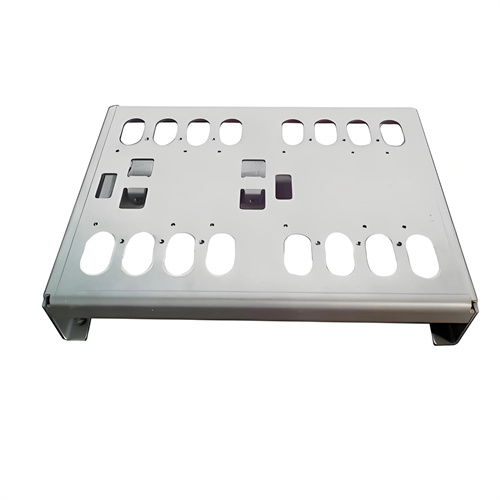Calculation of pressure center of blanking die
Calculating the pressure center of a blanking die is a crucial step in die design. Its purpose is to determine the point of action of the resultant blanking force, ensuring that this point coincides with the center of the press slide to avoid eccentric loads during the stamping process, thereby protecting the die and press and improving the quality of the blanked parts. A shift in the pressure center can lead to uneven wear on the die’s cutting edge, premature damage to the guide device, and even deformation of the press’s guide rails. Therefore, accurately calculating and adjusting the pressure center is a prerequisite for ensuring the proper functioning of the blanking die. Whether it’s a single-process die or a multi-station continuous die, pressure center calculation is required, especially for complex-shaped blanking parts or multi-station blanking, where determining the pressure center is even more critical.

The basic principle of calculating the pressure center of a blanking die is to treat the blanking forces generated by each blanking edge as a parallel force system based on the force system equilibrium condition in mechanics, and to determine the coordinates of the point of action of their resultant force through calculation. For blanking parts with simple shapes, such as circles and rectangles, their pressure center coincides with the geometric center and can be determined directly through geometric methods; for blanking parts with complex shapes or multi-punch blanking dies, they must be calculated through analytical or graphical methods. The analytical method is to decompose the outline of the blanking part into several simple geometric figures, calculate the blanking force and center of gravity position of each part separately, and then calculate the total pressure center coordinates based on the principle of force synthesis; the graphical method draws a vector diagram of the force to intuitively determine the point of action of the resultant force, and is suitable for blanking parts with less complex shapes.

The analytical method for calculating the pressure center has clear steps and high accuracy, making it a commonly used method in practical design. First, the outline of the blanking part or the layout of multiple punches is decomposed into n simple geometric units, such as straight lines and arcs. Then, the length Li of each unit is calculated (for multiple punches, the blanking perimeter of each punch). The blanking force Fi for each unit is determined according to the blanking force formula Fi = K × L × t × τ (where K is the coefficient, L is the blanking perimeter, t is the material thickness, and τ is the material shear strength). Since the material and thickness of each unit are the same, Fi is proportional to Li, and the calculation can be simplified by replacing Fi with Li. Next, a rectangular coordinate system is established to determine the centroid coordinates (xi, yi) of each unit. Finally, the pressure center coordinates (X0, Y0) are calculated according to the resultant moment theorem: X0 = Σ(Li × xi) / ΣLi, and Y0 = Σ(Li × yi) / ΣLi.

For multi-station progressive dies, the calculation of the pressure center is more complicated, as it is necessary to consider the resultant force of the blanking force of each station and the change in the force in the feeding direction. The blanking force of each station in the progressive die is different, and as the sheet metal is fed, the force state of each station is constantly changing. Therefore, it is necessary to calculate the pressure center at each stamping moment and ensure that its deviation from the center of the press slide is within the allowable range throughout the stamping process. It is usually required that the offset between the pressure center and the center of the slide does not exceed 1/100 of the size of the press worktable. For large molds, the offset must be controlled within 5mm. If the pressure center offset is too large, it can be adjusted by adjusting the layout of the punch, adding a balancing punch, or adopting a symmetrical layout to ensure that the pressure center is within a reasonable range.

After the pressure center calculation is completed, its accuracy must be verified through a test punch. During the test punching, observe the working status of the mold and the press, such as whether the mold has unbalanced load vibration, whether the cutting edge wear is uniform, whether the press slider has abnormal noise, etc. If any abnormality is found, it is necessary to recheck the pressure center calculation results and make adjustments. For blanking dies with complex shapes, finite element analysis software can be used for simulation calculations, and the pressure center can be determined through computer simulation to improve calculation efficiency and accuracy. In addition, when installing the mold, it is necessary to align the pressure center of the mold with the center of the press slide by adjusting the position of the mold handle or adding a gasket to the bottom of the mold. Accurate pressure center calculation and adjustment can significantly improve the service life of the punching die and the quality stability of the punched parts, and reduce the failure rate in the production process.
